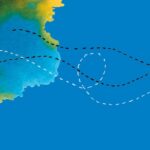Geographic Origins
The Republic of Nicaragua is the largest country in area in central America. It is bordered by Honduras to the north-west, the Caribbean Sea to the east, Costa Rica to the south, and the Pacific Ocean to the south-west.
History of Immigration and Settlement
It is unclear when the first Nicaraguans came to South Australia, but political turmoil has provided Nicaraguans with reason to emigrate.
The Somoza family held a right-wing dictatorship over Nicaragua from 1937 until 1978, when left-wing rebels, the Sandinista National Liberation Front, sought to overthrow the government and civil war erupted. The Sandinistas were temporarily victorious. However, United States aid was withdrawn after the war and the unpopularity of Sandinista economic policies, and slow economic recovery from the war, led to widespread dissatisfaction with the new government.
In 1981 fighting broke out between the Sandinistas and Contras, who were former members of Samoza’s National Guard and others opposed to the government. They were supported by the United States. The fighting did not end until a cease-fire agreement of 1990, in which year anti-Sandinista parties were elected to government. Nicaragua is still faced with severe economic problems, including high inflation and poor industrial performance.
Statistics
According to the 1991 census there were 28 Nicaraguan-born South Australians. Thirty-six people said that their mothers were born in Nicaragua, and 33 that their fathers were.
There was no separate record of Nicaraguan-born Australians or South Australians in the 1996 census.
The 2001 census recorded 25 Nicaraguan-born South Australians, while 13 people said that they were of Nicaraguan descent.
The 2006 census recorded 24 Nicaraguan-born South Australians.
The 2011 census recorded 27 Nicaraguan-born South Australians.
The 2016 census recorded 30 Nicaraguan-born South Australians, while 12 people said that they were of Nicaraguan descent.





Comments